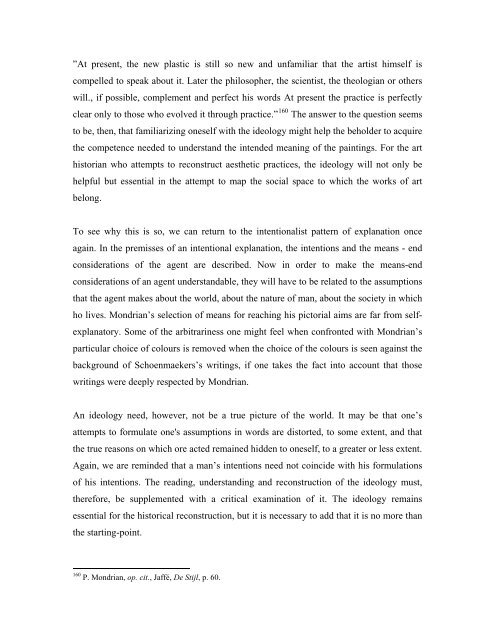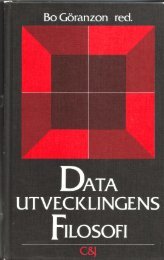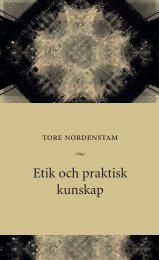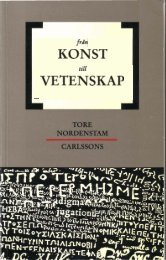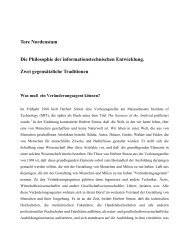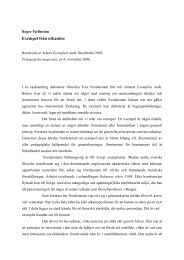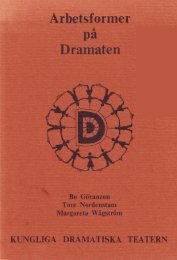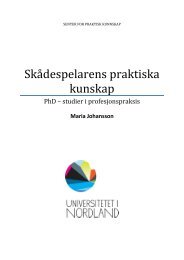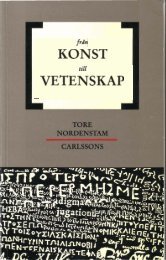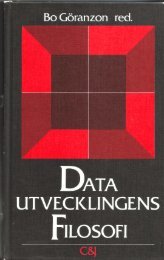tore nordenstam explanation and understanding in the history of art
tore nordenstam explanation and understanding in the history of art
tore nordenstam explanation and understanding in the history of art
Create successful ePaper yourself
Turn your PDF publications into a flip-book with our unique Google optimized e-Paper software.
”At present, <strong>the</strong> new plastic is still so new <strong>and</strong> unfamiliar that <strong>the</strong> <strong>art</strong>ist himself is<br />
compelled to speak about it. Later <strong>the</strong> philosopher, <strong>the</strong> scientist, <strong>the</strong> <strong>the</strong>ologian or o<strong>the</strong>rs<br />
will., if possible, complement <strong>and</strong> perfect his words At present <strong>the</strong> practice is perfectly<br />
clear only to those who evolved it through practice.” 160 The answer to <strong>the</strong> question seems<br />
to be, <strong>the</strong>n, that familiariz<strong>in</strong>g oneself with <strong>the</strong> ideology might help <strong>the</strong> beholder to acquire<br />
<strong>the</strong> competence needed to underst<strong>and</strong> <strong>the</strong> <strong>in</strong>tended mean<strong>in</strong>g <strong>of</strong> <strong>the</strong> pa<strong>in</strong>t<strong>in</strong>gs. For <strong>the</strong> <strong>art</strong><br />
historian who attempts to reconstruct aes<strong>the</strong>tic practices, <strong>the</strong> ideology will not only be<br />
helpful but essential <strong>in</strong> <strong>the</strong> attempt to map <strong>the</strong> social space to which <strong>the</strong> works <strong>of</strong> <strong>art</strong><br />
belong.<br />
To see why this is so, we can return to <strong>the</strong> <strong>in</strong>tentionalist pattern <strong>of</strong> <strong>explanation</strong> once<br />
aga<strong>in</strong>. In <strong>the</strong> premisses <strong>of</strong> an <strong>in</strong>tentional <strong>explanation</strong>, <strong>the</strong> <strong>in</strong>tentions <strong>and</strong> <strong>the</strong> means - end<br />
considerations <strong>of</strong> <strong>the</strong> agent are described. Now <strong>in</strong> order to make <strong>the</strong> means-end<br />
considerations <strong>of</strong> an agent underst<strong>and</strong>able, <strong>the</strong>y will have to be related to <strong>the</strong> assumptions<br />
that <strong>the</strong> agent makes about <strong>the</strong> world, about <strong>the</strong> nature <strong>of</strong> man, about <strong>the</strong> society <strong>in</strong> which<br />
ho lives. Mondrian’s selection <strong>of</strong> means for reach<strong>in</strong>g his pictorial aims are far from selfexplanatory.<br />
Some <strong>of</strong> <strong>the</strong> arbitrar<strong>in</strong>ess one might feel when confronted with Mondrian’s<br />
p<strong>art</strong>icular choice <strong>of</strong> colours is removed when <strong>the</strong> choice <strong>of</strong> <strong>the</strong> colours is seen aga<strong>in</strong>st <strong>the</strong><br />
background <strong>of</strong> Schoenmaekers’s writ<strong>in</strong>gs, if one takes <strong>the</strong> fact <strong>in</strong>to account that those<br />
writ<strong>in</strong>gs were deeply respected by Mondrian.<br />
An ideology need, however, not be a true picture <strong>of</strong> <strong>the</strong> world. It may be that one’s<br />
attempts to formulate one's assumptions <strong>in</strong> words are distorted, to some extent, <strong>and</strong> that<br />
<strong>the</strong> true reasons on which ore acted rema<strong>in</strong>ed hidden to oneself, to a greater or less extent.<br />
Aga<strong>in</strong>, we are rem<strong>in</strong>ded that a man’s <strong>in</strong>tentions need not co<strong>in</strong>cide with his formulations<br />
<strong>of</strong> his <strong>in</strong>tentions. The read<strong>in</strong>g, underst<strong>and</strong><strong>in</strong>g <strong>and</strong> reconstruction <strong>of</strong> <strong>the</strong> ideology must,<br />
<strong>the</strong>refore, be supplemented with a critical exam<strong>in</strong>ation <strong>of</strong> it. The ideology rema<strong>in</strong>s<br />
essential for <strong>the</strong> historical reconstruction, but it is necessary to add that it is no more than<br />
<strong>the</strong> st<strong>art</strong><strong>in</strong>g-po<strong>in</strong>t.<br />
160 P. Mondrian, op. cit., Jaffé, De Stijl, p. 60.


